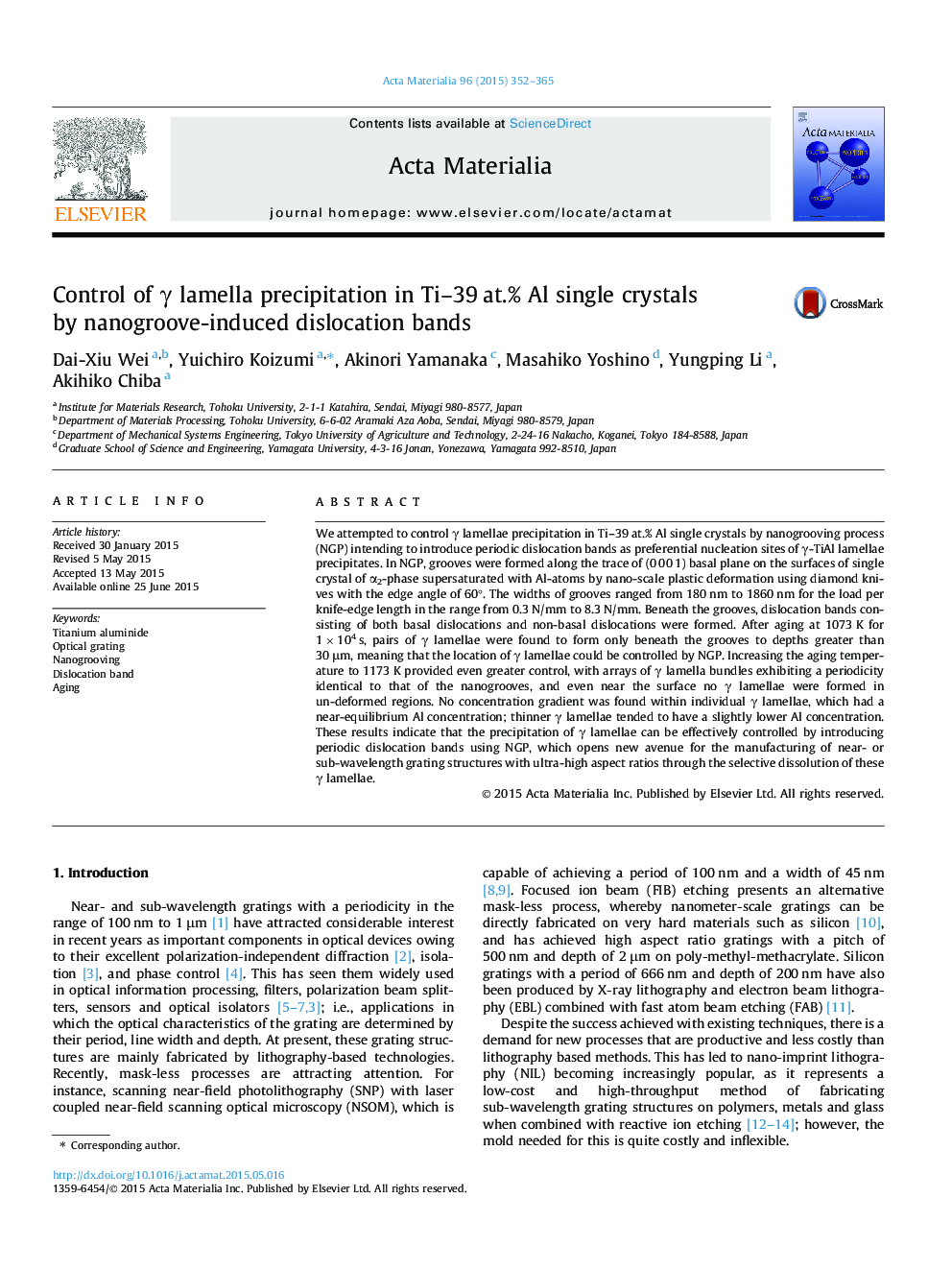| Article ID | Journal | Published Year | Pages | File Type |
|---|---|---|---|---|
| 7879896 | Acta Materialia | 2015 | 14 Pages |
Abstract
We attempted to control γ lamellae precipitation in Ti-39 at.% Al single crystals by nanogrooving process (NGP) intending to introduce periodic dislocation bands as preferential nucleation sites of γ-TiAl lamellae precipitates. In NGP, grooves were formed along the trace of (0 0 0 1) basal plane on the surfaces of single crystal of α2-phase supersaturated with Al-atoms by nano-scale plastic deformation using diamond knives with the edge angle of 60°. The widths of grooves ranged from 180 nm to 1860 nm for the load per knife-edge length in the range from 0.3 N/mm to 8.3 N/mm. Beneath the grooves, dislocation bands consisting of both basal dislocations and non-basal dislocations were formed. After aging at 1073 K for 1 Ã 104 s, pairs of γ lamellae were found to form only beneath the grooves to depths greater than 30 μm, meaning that the location of γ lamellae could be controlled by NGP. Increasing the aging temperature to 1173 K provided even greater control, with arrays of γ lamella bundles exhibiting a periodicity identical to that of the nanogrooves, and even near the surface no γ lamellae were formed in un-deformed regions. No concentration gradient was found within individual γ lamellae, which had a near-equilibrium Al concentration; thinner γ lamellae tended to have a slightly lower Al concentration. These results indicate that the precipitation of γ lamellae can be effectively controlled by introducing periodic dislocation bands using NGP, which opens new avenue for the manufacturing of near- or sub-wavelength grating structures with ultra-high aspect ratios through the selective dissolution of these γ lamellae.
Related Topics
Physical Sciences and Engineering
Materials Science
Ceramics and Composites
Authors
Dai-Xiu Wei, Yuichiro Koizumi, Akinori Yamanaka, Masahiko Yoshino, Yungping Li, Akihiko Chiba,
